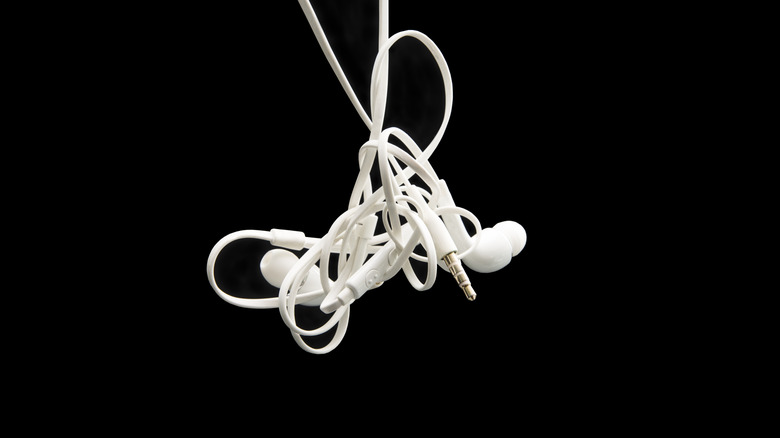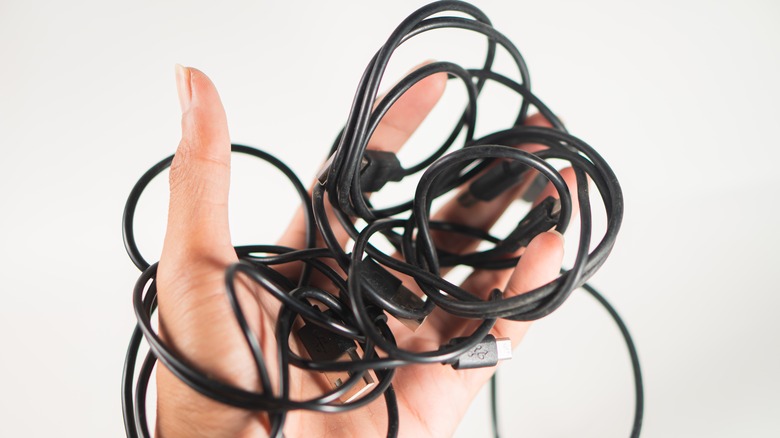It's Not Just You: Why Cords And Cables Get Tangled So Easily
The second law of thermodynamics posits that the world tends towards chaos without intervention, as anyone who uses wired earbuds knows all too well. Wired headphones are making a comeback thanks in part to the power of nostalgia, but the need to constantly untangle the cord is not one of those benefits. While it may seem like tangled cords are an unavoidable mystery, there are reasons behind the phenomenon and simple, proven ways to prevent it. According to a study conducted by Dorian M. Raymer and Douglas E. Smith from the University of California at San Diego's physics department, just a few seconds is all it takes to cause "spontaneous knotting of an agitated string."
The study experimented with cords of various lengths and materials under different conditions in more than 3,400 trials to determine why it is so hard to manage cables. Sadly, wired earphones are often made to specifications that enable messy tangles; here's what the study revealed and how you can manage your cables better. The two physicists likely began from a point of personal frustration; after all, who among us hasn't had to wrestle with tangled cords at some point? Raymer and Smith conducted their study using a mathematical concept known as knot theory, which calculates the probability of a knot forming based on cord length and flexibility, agitation time, and the size of the container. Cords of different lengths and stiffnesses were dropped into a box from a vertical orientation and the boxes were then rotated around a central axis at different speeds for various periods of time.
The science behind tangled cords
Headphone cables shorter than 46 cm (about 18.1 inches) were much less likely to develop knots as the ends didn't loop around the cord as frequently. The probability of tangles grows exponentially with cord length and reaches up to around 50% with strings between 1.5 and 6 meters (about 5 to 20 feet) long. Strings longer than that aren't any more or less likely to tangle, and unsurprisingly stiffer cables don't form knots as readily as more flexible ones. The intensity of the box rotation was also a factor; slower tumbling at 0.33 rotations per second allowed for more knots than tumbling at three rotations per second. Finally, larger containers almost always made for messier tangles, except when the box was tumbled at high speeds.
Most wired earphones use flexible cords of just the right length to be susceptible to tangling, so minimal movement in a jacket pocket or handbag is enough to tangle many of them in a matter of seconds. Additionally, the Y-shaped design of most earbuds makes it easier for the three ends to weave around the cable and form knots. While many cable organizers are made for household use, making a neat loop of your headphone cord and securing it with a twist tie or velcro cable wrap can prevent tangling. You could also opt for a case like the FYY cable organizer pouch, which prevents knots from forming by keeping cables from moving around as you go about your day.

